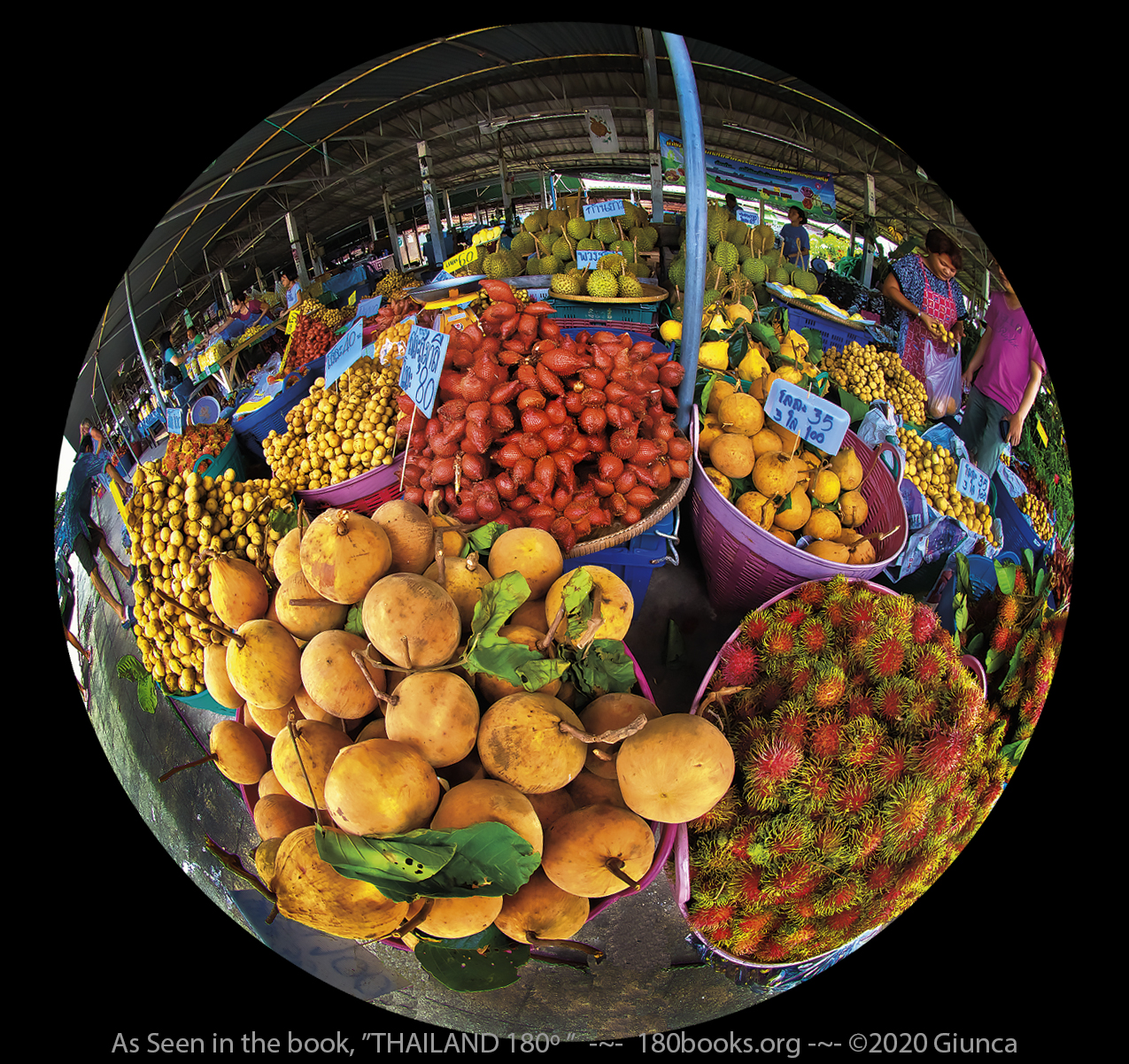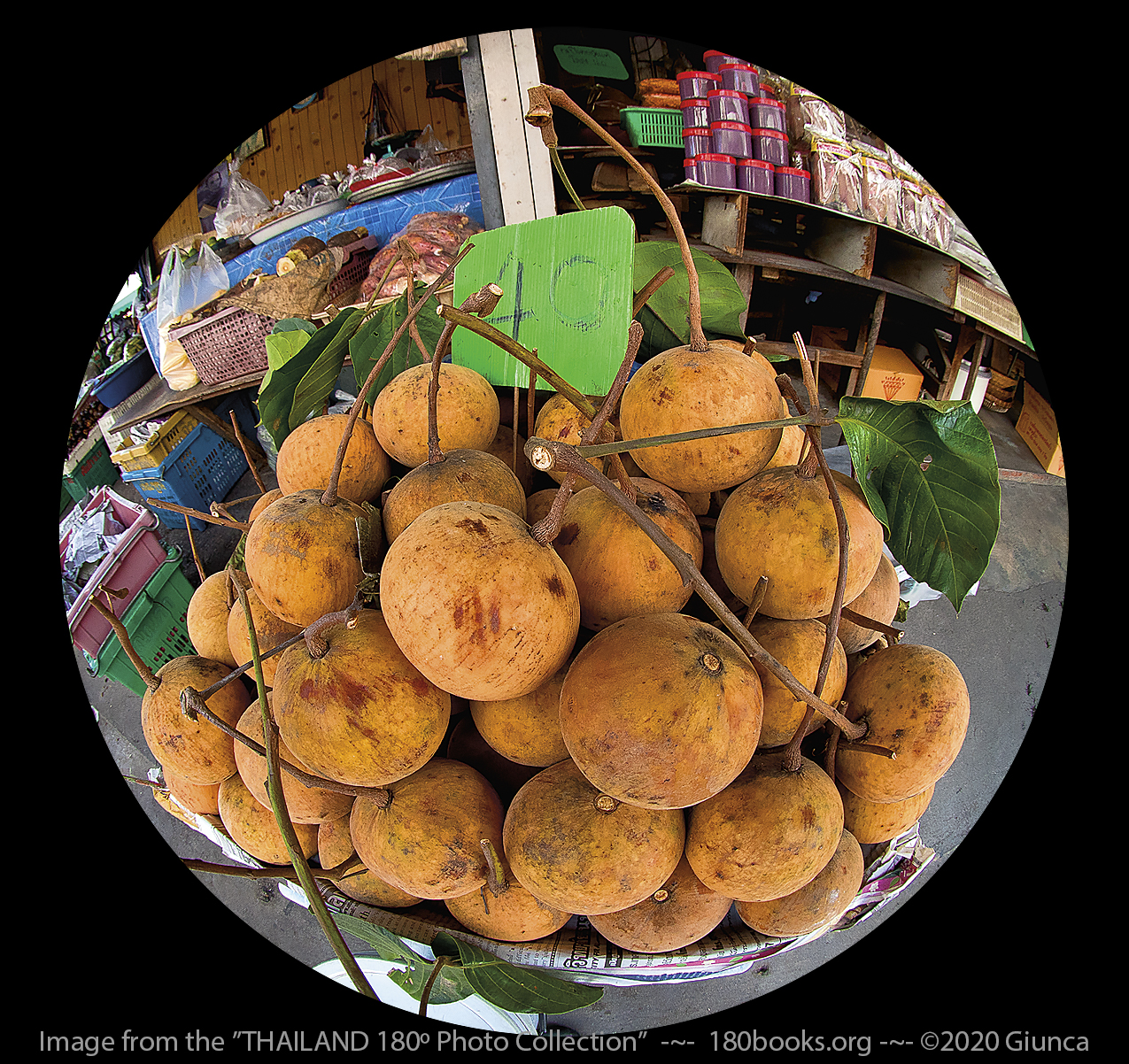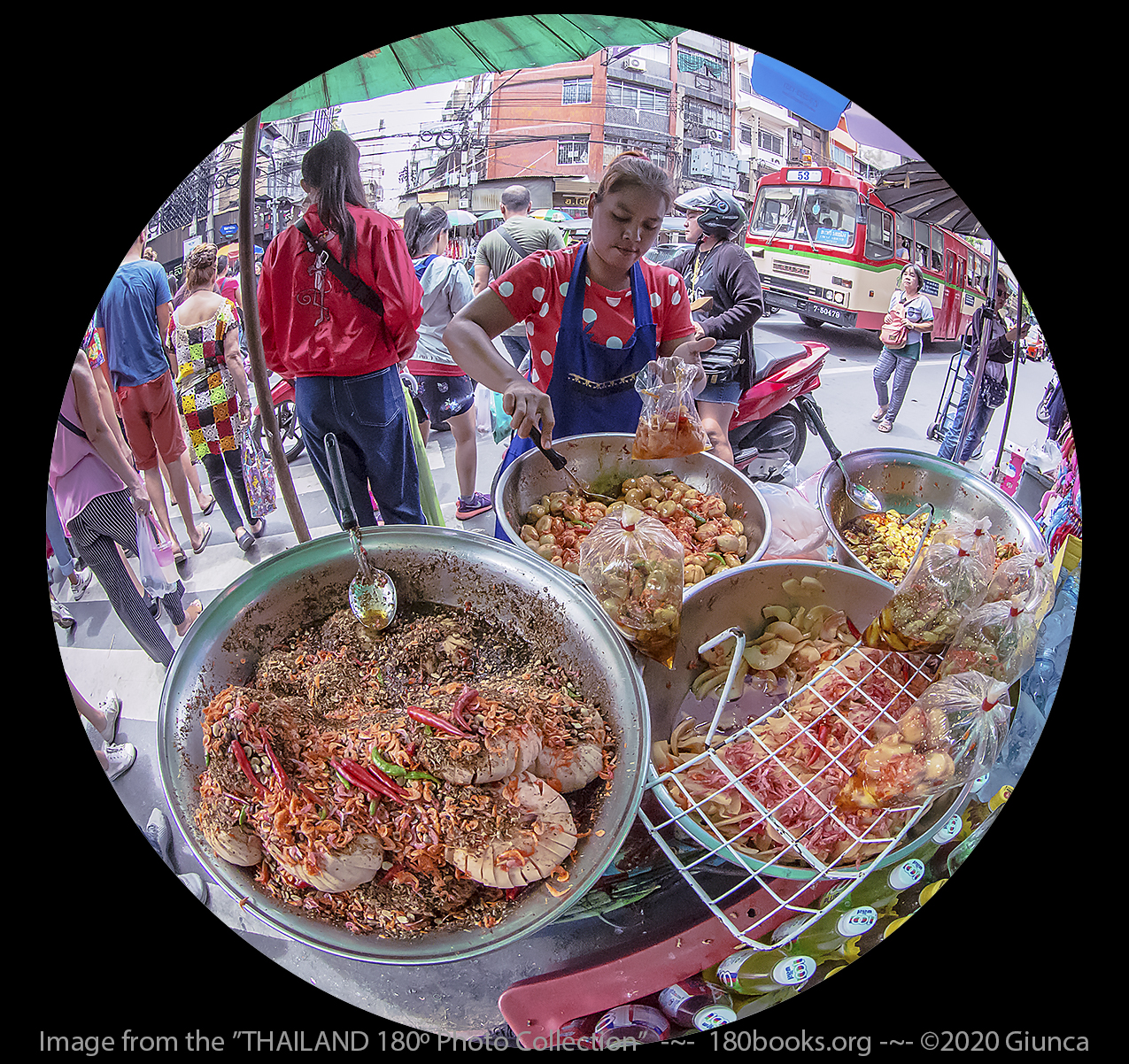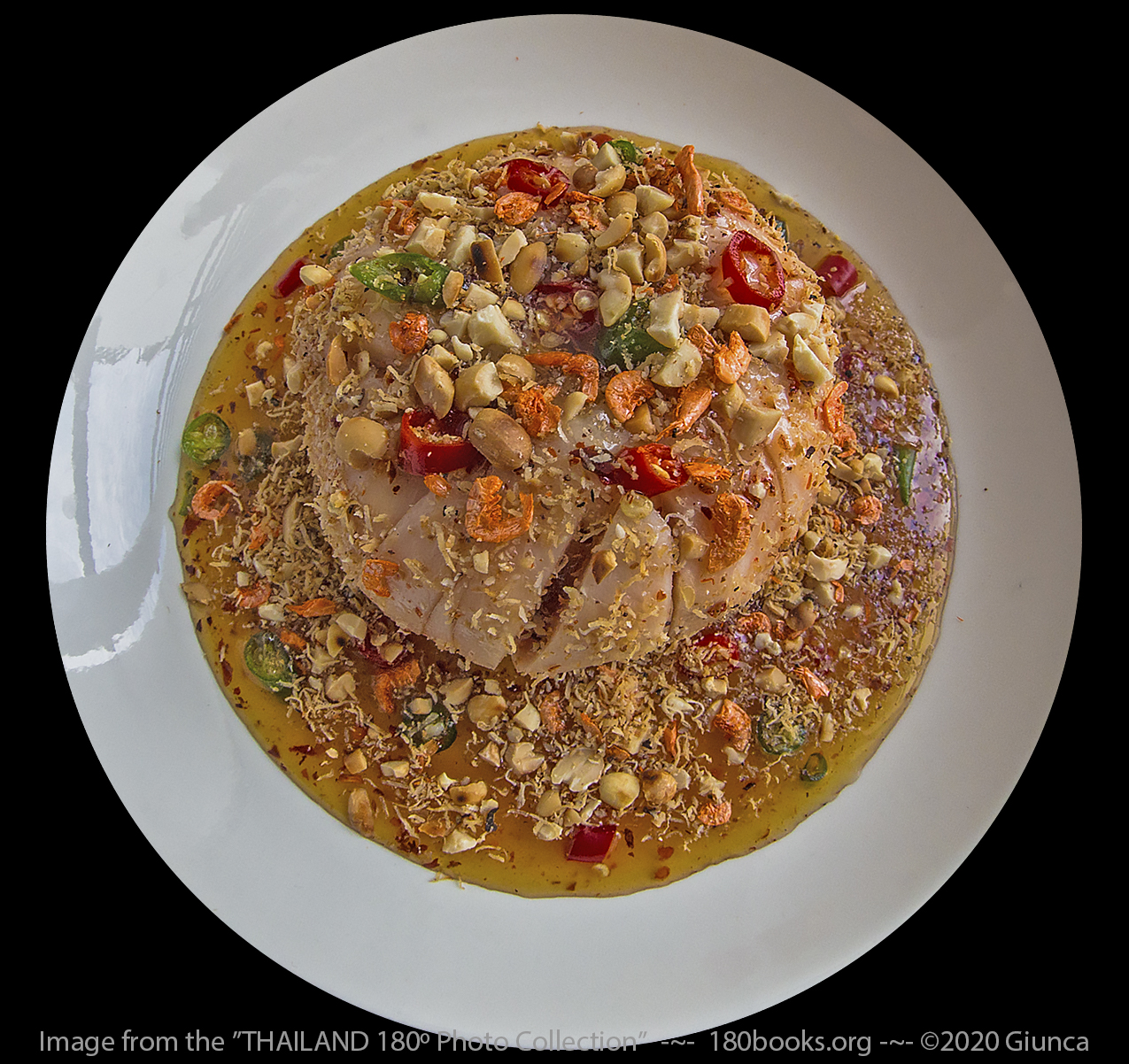It’s Santol Time in Thailand!

We’re finally back to our posts on Southeast Asian fruit! Today we’ll introduce you to a fruit called Santol. As if on cue, a large fruit vendor truck just drove past our house, with it loudspeakers blaring words of assurance that his fruit is ripe and sweet. This is a daily occurrence in my area, as well as most neighborhoods in Thailand. `Talk about farm fresh!
Without Further Ado, Here’s Santol
Santol or Cotton fruit is a tropical fruit native to Indochina; Philippines, Indonesia, Malaysia, Thailand, Myanmar, Laos, and also in India. There are two varieties of santol and different varieties have different ratios of sour to sweet. Thais make pickled santol or som tam from the sour one, which they call “Kraton”.
กระท้อน ผลไม้แถบอินโดจีน ฟิลิปปินส์ อินโดนีเซีย มาเลเซีย ไทย พม่า กัมพูชา ลาว และ อินเดีย
พันธุ์ ที่ได้รับความนิยมสูงสูดเป็นพันธุ์กระท้อนห่อที่มีรสหวาน ส่วนพันธุ์พื้นเมืองจะมีผลดก ผลมีขนาดเล็ก รสเปรี้ยว จึงนิยมนำมาทำเป็น กระท้อนดอง และ กระท้อนทรงเครื่อง
The cotton fruit’s name comes from the fluffy, white edible portion surrounding the seed. Its texture is spongy, and like a mangosteen, the flesh never separates from the seed entirely. Sucking the flesh emits a milky, creamy, sweetish juice loved by almost everyone who tries it. Offsetting the sweet juice, are tart, floral, citrus and vinous notes which give santol a complex taste. If the fruit is not fully ripened, expect a bitter taste. Therefore, when trying this fruit for the first time, ask the fruit vendor to select a tasty one, or you’ll never want to try another one!
What Does Santol Taste Like?
The outer flesh is surprisingly savory, earthy and a bit astringent. While some folks say the flavor reminds them of basil or oregano, few deny that the outer, grassy tasting flesh is not nearly as succulent as the cottony portion of a santol. The rind is quite sour, and some to dry it, grind it, or pickle it for use as a souring agent.
กระท้อนใช้ทำอาหารคาวหวานได้หลายชนิด ทั้งอาหารคาว เช่น แกงฮังเล แกงคั่ว ผัด ตำกระท้อน และอาหารหวาน เช่น กระท้อนทรงเครื่อง กระท้อนลอยแก้ว กระท้อนดอง แยม กระท้อนกวนและเยลลี่ หรือทานเป็นผลไม้สด กระท้อนเป็นผลไม้ที่มีสารต้านอนุมูลอิสระสูง
How is Santol Used?
In Thailand, santol is used in various dishes such as Gang Hunglay, gang kua (Thai curry) with pork or prawn, and som tam. Desserts include ice with santol in syrup (Kraton Loy Kaew), santol with Kraton Song Kreung, pickled santol, marmalade, and candied with sugar. It’s also popular to eat the ripened fruit for its antioxidant properties.
ทางด้านสมุนไพร กระท้อนมีสรรพคุณทางยาหลายประการ ใบสด ใช้ขับเหงื่อ ต้มอาบแก้ไข้ เปลือกต้นต้มน้ำดื่มแก้ท้องเสีย รักษาโรคผิวหนัง หลายส่วนของกระท้อนมีฤทธิ์แก้อักเสบ และสารสกัดจากกิ่งกระท้อนบางชนิดมีผลยับยั้งมะเร็งในหลอดทดลอง สารสกัดจากเมล็ดกระท้อนมีฤทธิ์เป็นยาฆ่าแมลง
Health Benefits From Santol
Santol has a number of health benefits, and most of its parts can be used, including the leaves, fruit, bark, and seeds. The leaves are used for rashes, to induce sweating and when powdered, for ringworm. Powdered bark is also given to women after childbirth as a heath remedy. This miricale fruit is also used to cure diarrhea, dysentery and a number of stomach ailments.
Scientific studies reveal additional, amazing health benefits of santol:
–According to a study published in Bioorganic & Medicinal Chemistry Letters, a compound from the santol plant called sentulic acid, has anti-cancer properties based on its ability to induce cytotoxicity in human leukemia cells.
–An additional 2009 study mentioned in the International Journal of Cancer Research found similar promising results of the bark extract’s tumor growth inhibition on breast cancer cells.
I should mention that the above photo was taken BC. Um, that’s before Covid-19, when mask wearing wasn’t common.
A Recipe for Santol Kraton Song Kreung
สูตร “กระท้อนทรงเครื่อง” ทำทานเองได้ง่ายไม่ยุ่งยาก
Sauce Ingredients : เครื่องปรุงประกอบด้วย
Part I
– 1 cup palm sugar น้ำตาลปีบ ๑ ถ้วยตวง
– ¼ cup water น้ำเปล่า ๑/๔ ถ้วยตวง
– 1 ½ TBSP fish sauce น้ำปลา ๑ ๑/๒ ช้อนโต๊ะ
– ½ tsp fermented shrimp paste (kapi) กะปิ ๑/๒ ช้อนชา can skip it if you don’t have
Directions
Part I : Put palm sugar and water in a saucepan, heat it on low frame and stir until all melt and starting to bubble, then add fish sauce and shrimp paste (kapi). Low the heat and stir once in awhile until it’s thick, then it’s done. Leave it until it’s room temperature.
ละลายน้ำตาลปีบในกระทะใช้ไฟอ่อนและใส่น้ำทีละน้อยจนละลายเข้ากัน พอเริ่มเดือดก็ใส่น้ำปลาและกะปิลงไป เคี่ยวต่อจนข้นเหนียวได้ที่แล้วปิดไฟ วางพักไว้ให้เย็น จากนั้นนำส่วนผสมที่ ๒ ใส่ลงไปคนให้ทั่ว
Part II
***Before Serving, put some of these ingredient in and stir well, & save some to sprinkle on top when serving.
– some chopped fresh chilies พริกขี้หนูซอย
– 2 TBSP sliced shallots หอมแดงซอย
– 1 tsp dried chilies พริกป่น
– 2 TBSP ground peanuts ถั่วลิสงป่น
– 2 TBSP dried shrimp กุ้งแห้ง
– 2 TBSP toasted shred coconut มะพร้าวคั่ว
Next, prepare the santol (to get rid of any sour taste) : เตรียมกระท้อน
– 1 ripe santol กระท้อน ๑ ผล
– 2 tsp salt เกลือ ๒ ช้อนชา
– 2 cups of water น้ำเปล่า ๒ ถ้วยตวง
Peel the santol and cut lengthwise in sections (1cm), to the seed, leaving the fruit intact; then marinate in a bowl of water with 2 teaspoons of salt for 20-30 minutes. Take it out and squeeze it until all the water runs off and place it on a serving plate. Pour the sauce on and sprinkle some dried chillies, dried shrimp, ground peanuts, and fresh chillies on top of the santol and serve!
ปอกเปลือกกระท้อนให้เกลี้ยง บั้งเป็นริ้วประมาณ ๑ ซม. หรือแล้วแต่ความชอบ จากนั้นนำไปแช่น้ำเปล่าผสมเกลือ ๒ ช้อนชา แช่ไว้ประมาณ ๒๐-๓๐ นาที แล้วนำขึ้น บีบน้ำเกลือออกให้หมด จัดใส่จาน ราดน้ำปรุงและโรยด้วยมะพร้าวคั่ว กุ้งแห้ง พริกป่น พริกขี้หนู ถั่วลิสงป่น ก็เสร็จพร้อมเสิร์ฟ!
Fon has promised to make this dessert soon and we’ll report back with a new photo. (If I don’t eat it first)

If you enjoyed this story, subscribe using the “Subscribe” button below, or Click “Like” on our fan page! Here
ผู้ ติดตามอ่านบล็อก สามารถติดตามอัพเดทโพสต์บล็อกได้โดยสมัครสมาชิกที่บล็อก หรือ กดไลค์ที่เฟสบุ๊คเพจของเราที่นี่ Here
Here’s How to Order Your Copy of THAILAND 180º Collectors Edition ~Today!
In Thailand —>>>http://www.thailand180.com/thaiorder.html
The Rest of the world: We are offering our book on Amazon.com, below list price and I’ll pay for the shipping within the United States! http://amzn.to/1knDPRR
Please Note: The photos in this article do not appear in this edition of THAILAND 180º
Not Familiar with Our Book???
This show details the origin of 180 Books, a series of art/travel books illustrated with a circular fisheye lens. By using infographics, pictures from our THAILAND 180º book, and never seen before images from our vault, we’ll demonstrate this unique lens and present our unique books.
Also, because there’s nothing to watch on TV, here’s a trailer about our book, “THAILAND 180”
Are you still here? You can use the button “Previous” at the top of this page to read our other blog post.
About the Authors
Photographer George Edward Giunca, and his Thai wife, have traveled around Thailand armed with a circular fisheye lens to create a photo essay on the rich cultural diversity, and abundant natural beauty of the Kingdom of Thailand. Fleeing from angry water buffaloes, slapping huge mosquitoes, watching exotic festivals and religious rituals, gorging on delicious spicy food, applying aloe vera cream to sunburned skin, wading through rice paddies, getting drenched to the bone by heavy monsoon rains, and gawking at breath-taking scenery; made it a journey of epic proportions! The result is the book, THAILAND 180º. Later, they traveled extensively through Myanmar, Malaysia, and India, gathering a massive collection of 180º photos. They currently live in Bangkok, Thailand










